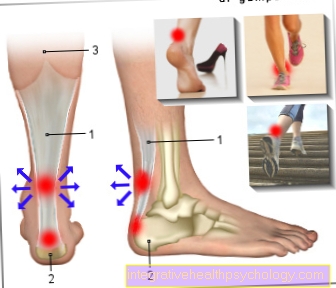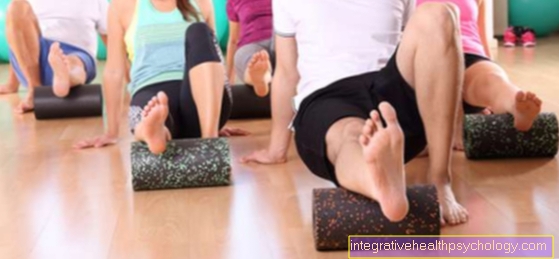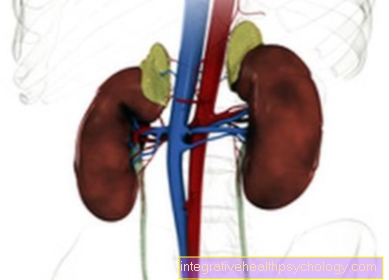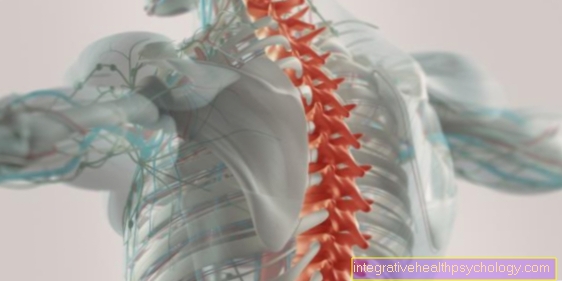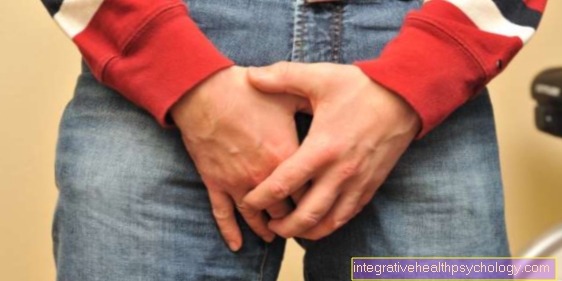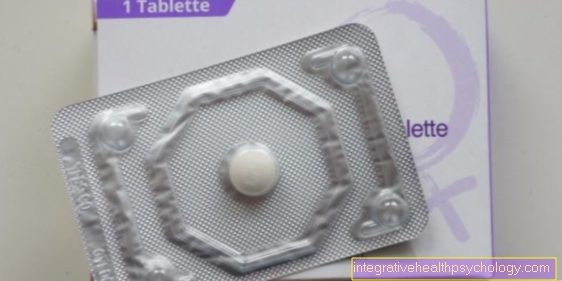Forearm crutches
Definition - What are forearm crutches?
Forearm crutches are crutches (colloquially also known as crutches) in which the body weight is taken up with the forearms and hands in order to relieve the legs.
They basically consist of a metal tube that serves as a support. At the lower end there is a rubber capsule that provides slip resistance. The upper end consists of a handle and a cuff that wraps around the forearm and serves as additional support. The forearm crutches are usually adjustable in size.

Who needs forearm crutches?
Forearm crutches are mainly needed for injuries to the feet, legs or hips. They serve to relieve the injured structure, as the body weight is absorbed by the arms and so the injured leg does not have to be stressed.
Common injuries include broken bones, sprains, bruises, torn or stretched ligaments, etc. Also injuries to the soles of the feet that make it impossible to bear strain can be an indication for the use of crutches.
In all types of injuries, the arms should take the portion of the body weight that the injured leg cannot support. Usually the crutches are only needed for a short time (a few days to weeks) until the injury has healed sufficiently.
The crutches are used especially after operations on the feet and legs. People who are particularly unsteady on their legs can also benefit from crutches. The walking aids are primarily used for prophylaxis (prevention) of falls that could result in serious injuries.
What are the different types?
The forearm crutches initially differ in their color. There are also different sizes. Almost all forearm crutches are height adjustable. Especially small or large people may still have to fall back on special models. The maximum load weight also differs between the different types. The standard forearm crutches are usually made for a maximum body weight of 100 to 120 kg. However, there are also models that can handle higher weights.
The forearm crutches also differ in the type of handgrips. So there are the "normal" crutches that have a plastic handle. Anatomical or ergonomic handles are also available, these are usually made of hard rubber instead of hard plastic.
The arm rests, which serve to additionally stabilize the forearm on the crutches, are available in two different versions: This one type forms roughly a semicircle (approx. 180 °) in which the forearm can be placed.
The other model covers almost 360 ° and therefore almost completely embeds the arm. Both arm shells are usually made of hard plastic. Different materials are also used for the supporting metal tube. Mostly it is a steel pipe, but light metal is also used.
There are also some special models that can be folded up and folded up for better transport. Special crutches are also made for children. These are of course shorter and designed for a lower body weight, and the plastic components of the crutch are usually colored instead of monochrome.
What accessories are there?
There are many different accessories for forearm crutches. This includes various systems that serve as a holder or transport aid.
These brackets have two functions: On the one hand, two forearm crutches are usually required, these can be held together with this type of accessory.
On the other hand, the transport aids / brackets are used for attachment to a wheelchair or bed. Leaning against a wall or table is also simplified. The forearm crutches do not fall out of reach and are easily accessible for the impaired people when they are needed.
Two types of additional accessories are used for the crutches, especially in winter. On cold days, snow and ice can make the sidewalks smooth and slippery. In order to still ensure a secure hold on the unsafe ground, so-called spikes or ice points can be attached to the forearm crutches. These anchor themselves on the smooth surface and thus offer protection against slipping.
Walking with forearm crutches also causes the hands to get cold quickly. In most cases, however, gloves cannot be worn, as it is difficult to grip the crutches securely with them. This can be remedied by a so-called stick muff, a kind of glove that still guarantees a secure grip. Other accessories are all kinds of padding on the armrests and the handle.
Handle poster
Grip pads are designed to improve the position of the hand on the handle by protecting against slipping in heat and sweating. In addition, the padding protects the skin on the palm of the hand.
These grip pads usually consist of a rubber layer on one side and a soft padding layer on the other. They are wrapped around the handle with the rubber layer. This prevents the grip pad from slipping off the handle, and at the same time the grip area is enlarged by the additional padding. Such grip pads cost around € 5 to € 40, depending on the material. Alternatively, cycling gloves are often used, which also have a cushioning function and also ensure adhesion to the handle.
Ergonomic handles
In contrast to the normal hard plastic handle, the ergonomic or anatomical handle is adapted to the shape of the hand. This enables a better distribution of pressure on the hand. Especially the ball of the hand in the area of the thumb is supported by the ergonomic handle. This increases the contact surface for the hand, which on the one hand reduces the stress on the wrist and on the other hand prevents the hand from slipping off the handle. In addition, the ergonomic handles are usually made of rubber instead of hard plastic. This also improves the grip on the handle. Forearm crutches with ergonomic handles cost around 25 to 30 €.
Foldable crutches
Foldable forearm crutches are mainly used by people who are long-term or permanently dependent on the crutches. These mostly two-part crutches can usually be folded to a length of 50 to 60 cm and are therefore easier to transport. So they can be easily stowed in the pocket on the backrest of a wheelchair. Under certain circumstances, they can even be taken with you in your suitcase or sports bag when you travel.
Since the ability to travel plays a major role in the foldable forearm crutches, they are usually made of extra light material. The cost is around € 30, and it is even higher with special accessories. The fold is usually secured by a thread and / or clips. In order to guarantee the absolute safety of the foldable crutches, their stability is checked according to fixed regulations.
Forearm support with spikes
Spikes or ice points are used especially in the cold winter months. During this time, the ice and snow make the walk more unsafe. Spikes can provide a special hold and security against sliding on such a smooth surface. The spikes are usually attached to a rubber foot. This must be placed on the metal tube instead of the normal rubber capsule. When buying, you should therefore pay attention to the diameter of the metal tube, so that the foot with the spikes can be attached precisely. This is essential for the safety of the spikes.
Forearm crutches with adhesive buffer
In contrast to the normal foot of the forearm crutches, adhesive buffers are made of somewhat harder rubber. They offer more grip than the "standard rubber foot", especially on wet and slippery surfaces.
Due to the harder material, the abrasion is significantly lower than with the rubber capsule. Such a buffer can be purchased for around 10 €.When buying, you must pay attention to the diameter of the metal tube, as the adhesive buffer must be fitted precisely onto its lower end.
How much do forearm crutches cost?
The basic model of the forearm crutches is around € 20. Additional aids are available for an additional charge. Crutches with ergonomic handles usually cost between € 25 and € 30.
Accessories such as grip pads can be purchased from € 5, spikes cost around € 10. Particularly unusual models such as foldable forearm crutches are a bit more expensive. Special lengths such as particularly large or small forearm crutches usually cost a little more. Crutches that are supposed to carry a particularly high body weight must be made of a more stable material and are therefore also more expensive than the standard model.
Does the health insurance company cover these costs?
As soon as the indication for forearm crutches is given, the health insurance is obliged to cover the costs. Only 10% of the original price has to be paid privately.
However, the costs must not be more than € 10 and not less than € 5. In addition, there may be prescription and delivery charges if the crutches have to be delivered to your home. Special requests such as extra accessories usually also have to be paid for privately. Unless there is a sufficient medically justifiable indication.
How do I learn to walk with forearm crutches?
Walking with forearm crutches must be practiced sufficiently, as this is the only way to reliably relieve the affected leg and provide additional stability. First, walking is practiced on level ground under the supervision of a physiotherapist. A distinction must be made between a complete relief, a partial load and a full load of the affected leg.
There are also different gaits, which are referred to as two, three or four-point gait. If you are safe to walk on level ground, you must also train up and down stairs with physiotherapeutic help.
Who Needs Armpit Rests?
Armpit supports are used when an affected person not only needs to relieve the legs, but also needs to protect the arms and hands.
Armpit supports must be used, especially in the case of broken bones and joint damage to the arm. One indication would be, for example, a fall in which both a leg and an arm are injured (e.g. by catching the fall). Joint diseases such as rheumatism can also make the use of armpit supports necessary.














